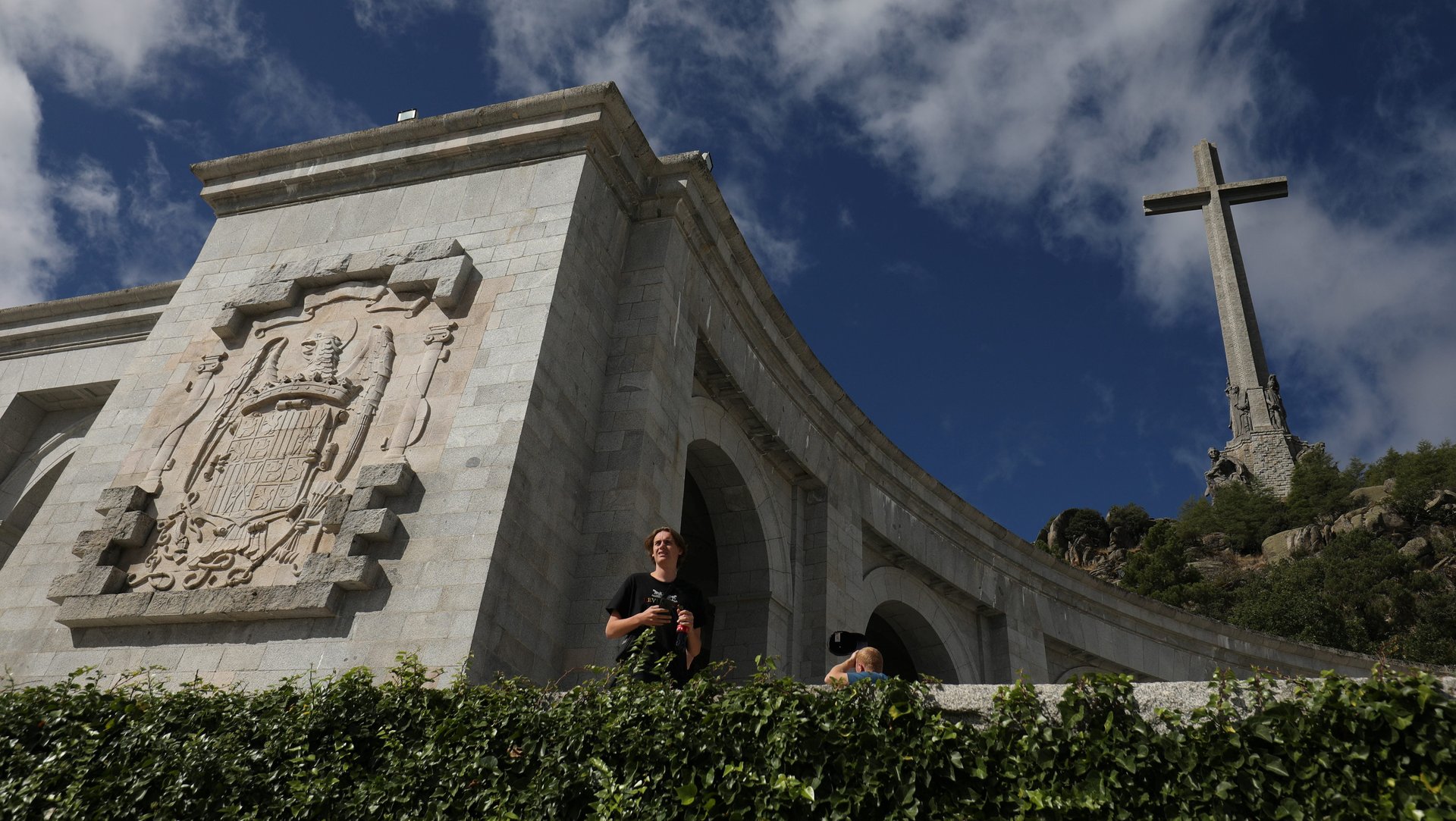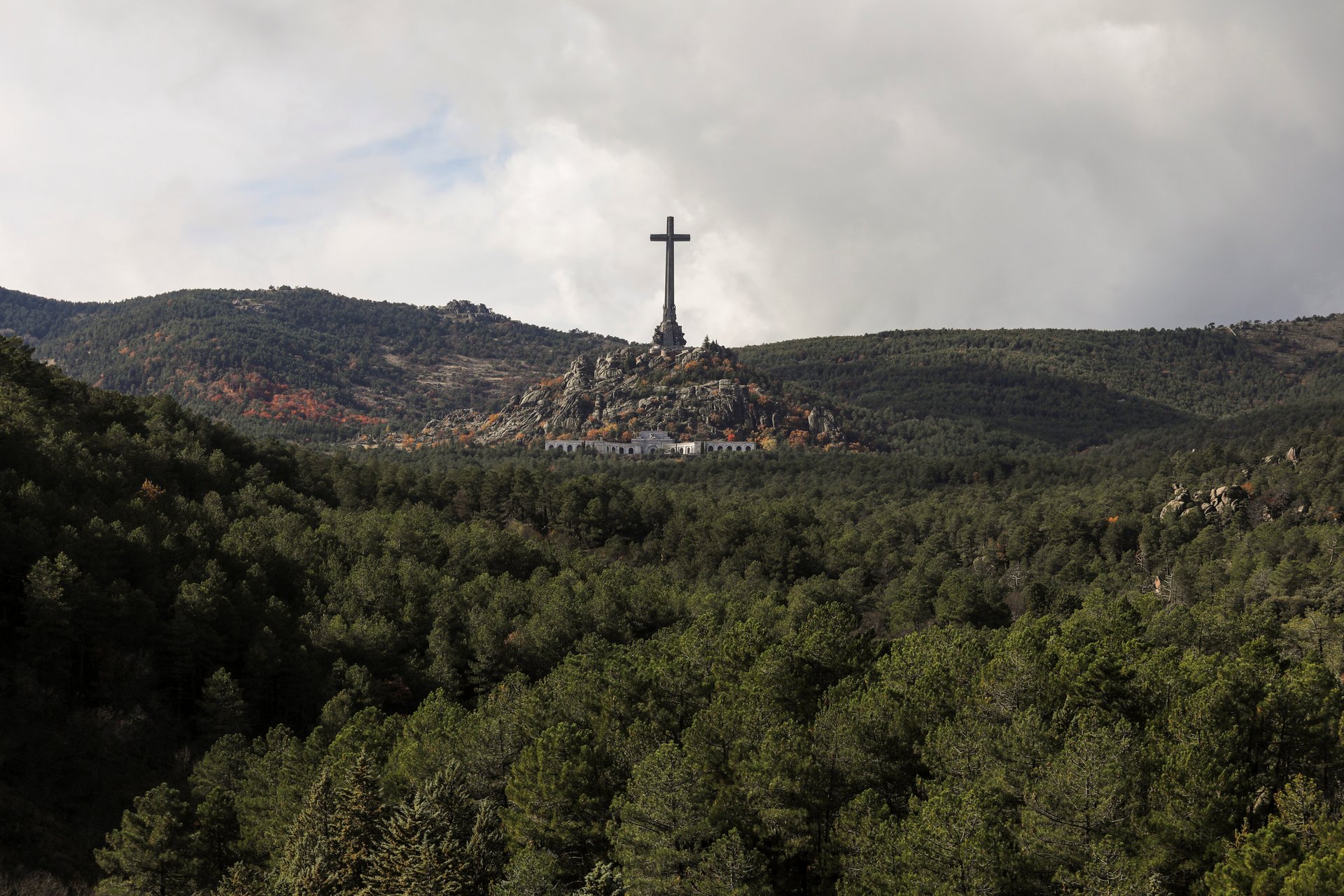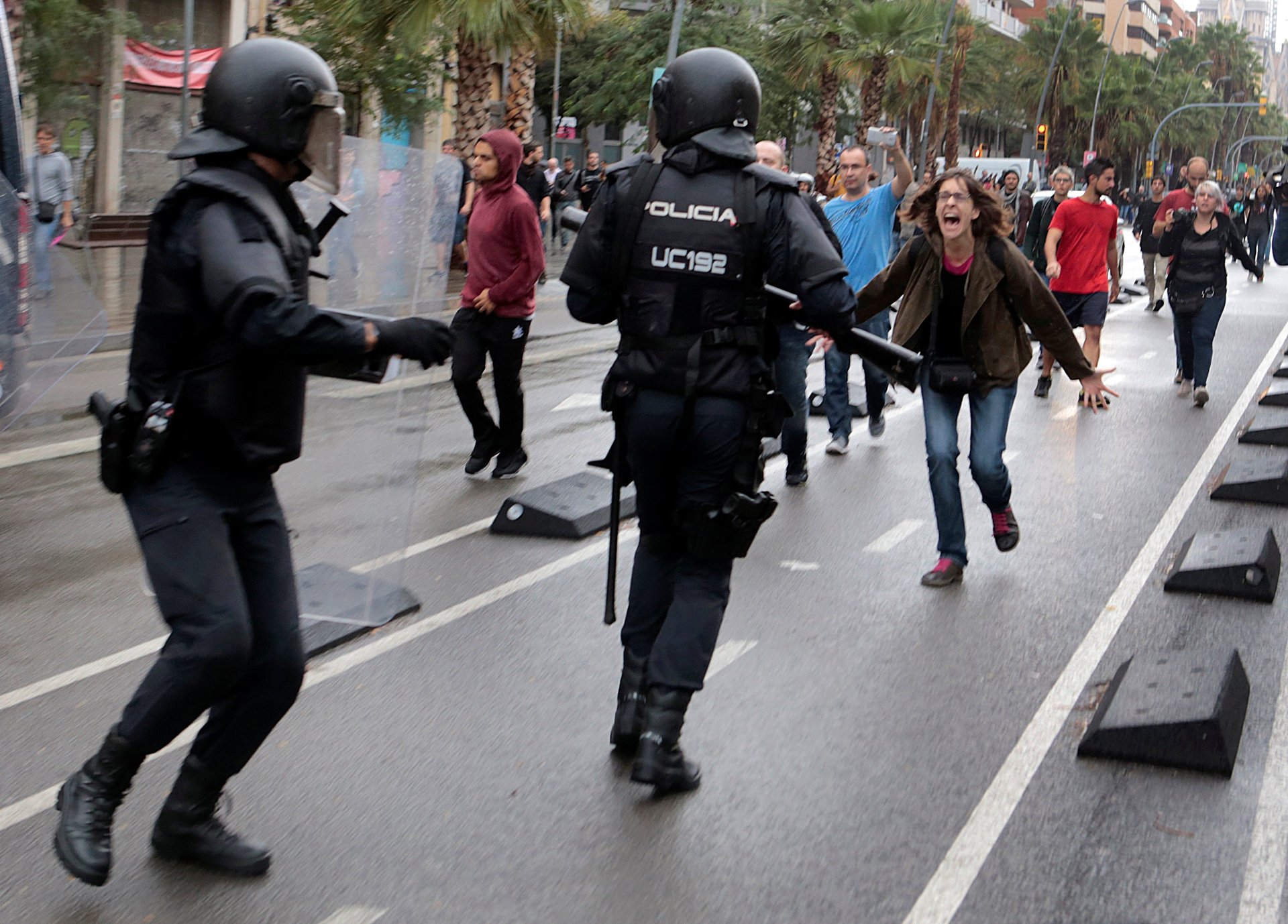It’s Spain’s turn to ponder what to do with a dead dictator
Ever since the death of general Francisco Franco on Nov. 20, 1975, the former Spanish dictator has lain in one of the only two marked graves at a monumental burial complex one hour from Madrid. If anyone needs a visual reminder that Spain was a dictatorship for nearly 40 years, the Valle de los Caídos is it.


Ever since the death of general Francisco Franco on Nov. 20, 1975, the former Spanish dictator has lain in one of the only two marked graves at a monumental burial complex one hour from Madrid. If anyone needs a visual reminder that Spain was a dictatorship for nearly 40 years, the Valle de los Caídos is it.
Last weekend, the Valley of the Fallen, built at the end of the three-year Spanish Civil War, was closed to prepare for Franco to be exhumed and buried in a less ostentatious location by Oct. 25. It’s a move left-leaning political parties have been pushing for as part of putting Spain’s fascist past in its proper place. Unlike Germany, and to a much lesser extent Italy, Spain, deeply scarred by the war, took the approach of letting bygones be bygones in its transition to democracy.
On the eve of the exhumation, the heavy sentences handed Monday (Oct. 14) to Catalan politicians who organized an independence referendum offered another reminder that despite the country’s institutionalized amnesia, deep fractures dating back to the war and the Franco era persist.
Franco’s regime, after all, won the war and recognition from other countries after the fall of Barcelona in 1939, which ended the ability of Spain’s Second Republic to resist the Nationalist forces. Franco canceled the autonomy Catalonia had been granted as part of the republic, and banned its language and flag. Forty years after his death, that history is still simmering.
How not to bury the past
Dead dictators are a pesky business worldwide.
Countries that don’t democratize after their Supreme Commander dies tend to embalm them and keep them somewhere prominent, like China has done with chairman Mao, who lies full of formaldehyde in Beijing’s Tiananmen Square. North Korea’s dictators, Kim Il Sung and his son, Kim Jong Il, lie in state in Pyongyang, in what is probably the biggest mausoleum in the world.
For countries that turn to democracy, things are far more complicated. How do you avoid a focal point for those with affection for dictatorship, which could even poison contemporary politics?
Take Italy: Mussolini’s resting place in Predappio, where he was born, has put the small northern Italian town at the center of an ongoing controversy—nostalgists go there to pay their respects in spite of legal constraints on celebrating fascism. Adolf Hitler’s remains, after he committed suicide on April 30, 1945, have long been the subject of conspiracies, wild theories, and historical investigations—the upside of this mystery being that there is no tomb for people to have dubious commemorations at. Neo-nazis for a time gathered in Austria at the graves of his parents, Alois and Klara Hitler, and in 2012 their tombstones were removed to end such pilgrimages.
Franco’s case has been very different.
His monumental grave was planned by the dictator himself (link in Spanish), and built from 1940 to 1958, in large part by political prisoners. About 40,000 people, from both sides, were eventually buried there in unmarked graves. The Francisco Franco Foundation, set up by his family, lays fresh red and yellow roses, the colors of the Spanish flag, each day at the grave. The only other grave identified at the site belongs to Antonio Primo de Rivera, the founder of the fascist Falange organization, who was treated as a martyr by the Franco regime.

Spain’s “Pact of Forgetting”
Before his death, Franco had decided that his successor would be prince Juan Carlos, the grandson of Spain’s last monarch, who was expected to continue the dictatorship. Instead, the young king ushered in a transition that turned the country into today’s democracy. After Franco’s death, Spain decided that looking forward, and taking the military and right-wing forces along, was more urgent than punishing the perpetrators of an estimated 140,000 disappearances. In 1977, an Amnesty Law inscribed this informal Pact of Forgetting into Spain’s legal code.
Spain had to wait until the institution of the Memory Law of 2007 to begin officially coming to terms with the past, offering public funding for exhumations and forensic attempts (link in Spanish) to find missing loved ones. According to the country’s justice minister, Spain ranks second only to Cambodia for the number of disappeared. As recently as 2013, the United Nations told the country it needed to do far more. Investigations and healing have been a fraught process that has been ongoing ever since, swinging with electoral fortunes, as left-wing parties push for truth and reconciliation, while the right-wing insists that certain wounds are best left alone. Last year, a Truth Commission was established.
The long-simmering decision to exhume the remains of Franco was reached after numerous court cases backed by the Spanish Socialist party and Podemos, a relatively new far-left party, but fought by Franco’s family and center-right parties. A ruling from Spain’s top court last month dismissed those appeals. Now Spain’s caretaker government wants the exhumation to be done as quickly as possible, as elections on Nov. 10, the fourth national polls in four years, loom.
Franco will be put to rest in a nondescript tomb in the cemetery north of the capital where his wife, Carmen Polo, is buried.

In the middle of all this, this week’s sentences are a reminder that dealing with the past isn’t only a matter of punishment and exhumations. They also showed a government treating a political problem with historic roots as a public order one.
Since 1979, Catalonia has been granted a high degree of autonomy from Madrid, which deepened in 2006 with a statute allowing the region to require all residents to learn Catalan, and have greater control over immigration and the judiciary, as well as a broad right of self-determination. Conservatives challenged the statute—which made references to “Catalonia as a nation”—at the Constitutional Court, which watered down several provisions in 2010, sparking mass protests.
The violent crackdown by a conservative Spanish government on people participating in the banned 2017 Catalonia referendum with rubber bullets and batons traces a direct line to “the country’s rich history of right-wing repression.” Even after Franco is dug up and buried again, clashes between “indissoluble unity” and regional autonomy that played out in Spain nearly a century ago will still be unfinished business.